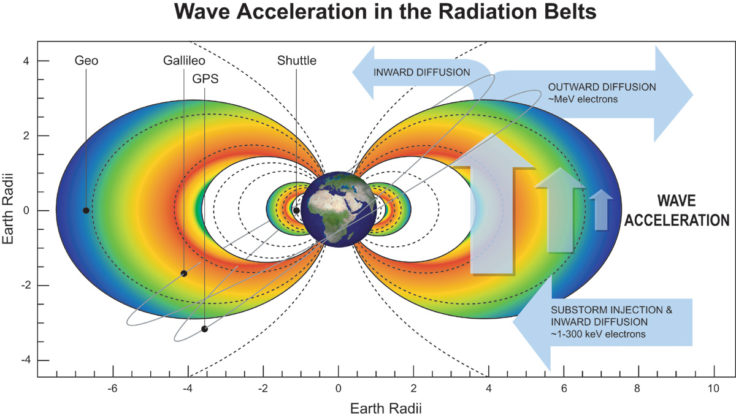| Type of model | 3 dimensional, time-dependent diffusion model for phase-space density based on solution of the Fokker-Planck equation |
| Diffusion coefficients | Radial diffusion coefficients are taken from [Brautigam & Albert ,JGR,2000] Pitch-angle and energy diffusion coefficients are calculated using the PADIE code [Glauert & Horne, JGR, 2005]. |
| Co-ordinate system | The model uses 2 coordinate systems to construct computational grids: (L*, α, E) and (L*, μ, J) |
| Numerical method | Implicit finite difference scheme |
| Required Inputs | A time-series of Kp for the period in question |
| Optional Inputs | The initial particle flux or phase space density The variation of particle flux or phase space density with time on the boundaries in L* and E |
| Wave-particle interaction models | BAS chorus model BAS hiss model which includes diffusion due to lightning and hiss in plumes These MLT averaged models were derived using the BAS wave database Other wave-particle interactions can also be included |
| Pitch-angle, energy and L-shell ranges | 0o ≤ pitch-angle ≤ 90o The energy and L-shell grids can be varied but typically 1 ≤ L*≤ 7 and 10 MeV/G ≤ μ ≤ 2000 MeV/G at L* = 6.5 |
| Outputs | The model produces a time-series of the flux or phase-space density on the 3-d grid |
